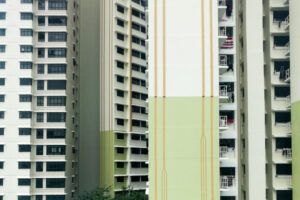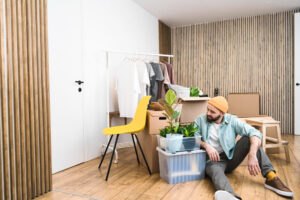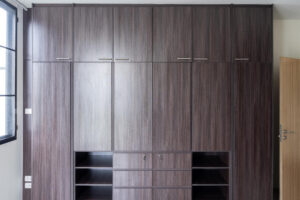 In the bustling urban landscape of Singapore, where space optimization comes at a premium, the art of optimizing compact apartments has become a necessity for both designers and residents. With an increasing population and a limited land area, Singaporean apartments are evolving to maximize functionality without compromising on style.
In the bustling urban landscape of Singapore, where space optimization comes at a premium, the art of optimizing compact apartments has become a necessity for both designers and residents. With an increasing population and a limited land area, Singaporean apartments are evolving to maximize functionality without compromising on style.
In this article, we’ll delve into the innovative strategies for space optimization and design principles employed space optimization to make the most out of limited spaces in Singapore’s urban homes.
The Challenge of Space Optimization in Compact Living
 Living in compact apartments poses unique challenges that demand creative solutions. Singapore’s real estate landscape often features smaller living spaces, prompting a shift in design philosophies to accommodate the growing population. Balancing aesthetics, functionality, and comfort becomes a delicate dance, requiring a thoughtful approach to every square meter.
Living in compact apartments poses unique challenges that demand creative solutions. Singapore’s real estate landscape often features smaller living spaces, prompting a shift in design philosophies to accommodate the growing population. Balancing aesthetics, functionality, and comfort becomes a delicate dance, requiring a thoughtful approach to every square meter.
Hurdles to overcome:
1. Limited Floor Area:
Compact apartments in Singapore often come with limited floor area, challenging designers to create layouts that make efficient use of every space optimization.
2. Storage Constraints:
Storage can be a significant issue in smaller homes for space optimization. Addressing this challenge involves integrating clever storage solutions seamlessly into the design.
3. Multipurpose Needs:
With limited space, the need for multifunctional areas is heightened. Each room may serve multiple purposes, requiring adaptable furniture and versatile layouts.
Design Strategies for Compact Living
Designers and architects in Singapore have embraced several strategies in space optimization to optimize space in compact apartments, ensuring that functionality and aesthetics coexist harmoniously.
1. Smart Furniture Selection
 Foldable and Expandable Furniture: Utilizing furniture that can be folded or expanded allows for flexibility in a compact setting. Foldable tables, wall-mounted desks, and expandable dining tables are popular choices.
Foldable and Expandable Furniture: Utilizing furniture that can be folded or expanded allows for flexibility in a compact setting. Foldable tables, wall-mounted desks, and expandable dining tables are popular choices.- Modular built-in Furniture: Modular built-in furniture (kitchen and wardrobe) adapts to changing needs. Pieces that can be rearranged or stacked provide versatility in a limited space.
2. Clever Storage Solutions
 Under-Bed Storage: Capitalizing on the space under the bed for storage drawers or built-in cabinets maximizes the use of vertical space.
Under-Bed Storage: Capitalizing on the space under the bed for storage drawers or built-in cabinets maximizes the use of vertical space.- Built-in Cabinets and Shelves: Custom-built cabinets and shelves that seamlessly integrate into the walls help declutter living spaces, providing storage without sacrificing floor space.
3. Utilizing Vertical Space
 Floor-to-Ceiling Storage: Expanding storage vertically creates additional space. Tall cabinets and shelving units make use of often underutilized vertical areas.
Floor-to-Ceiling Storage: Expanding storage vertically creates additional space. Tall cabinets and shelving units make use of often underutilized vertical areas.- Vertical Gardens: Bringing greenery indoors is a popular trend in Singaporean compact apartments. Vertical gardens not only add aesthetic appeal but also optimize unused wall space.
4. Open Floor Plans and Multi-Functional Areas
 Open Layouts: Knocking down unnecessary walls to create open floor plans gives the illusion of more space and allows for better flow between rooms.
Open Layouts: Knocking down unnecessary walls to create open floor plans gives the illusion of more space and allows for better flow between rooms.- Convertible Furniture: Investing in furniture that serves multiple purposes, such as sofa beds or transforming coffee tables, enables rooms to adapt to different needs throughout the day.
Technological Integration for Efficiency
In the age of smart homes, technology plays a crucial role in optimizing compact living spaces in Singapore.
1. Smart Home Automation
 For those who have limited space in their homes, small and energy-efficient appliances can be a great help. They not only save space but also consume less energy, making them a perfect fit for small kitchens and utility spaces.
For those who have limited space in their homes, small and energy-efficient appliances can be a great help. They not only save space but also consume less energy, making them a perfect fit for small kitchens and utility spaces.
Additionally, integrating smart home systems can make a world of difference. By automating lighting, temperature, and security features, residents can optimize the use of space and resources in their homes. With the help of these automated systems, controlling various aspects of the house becomes seamless, convenient, and efficient.
2. Virtual and Augmented Reality in Design
 Interior designers leverage virtual and augmented reality tools to help clients visualize their compact apartments for space optimization. These technologies project various design elements and furniture arrangements, enabling informed decision-making.
Interior designers leverage virtual and augmented reality tools to help clients visualize their compact apartments for space optimization. These technologies project various design elements and furniture arrangements, enabling informed decision-making.
The tools create a cohesive representation of the proposed design, making the experience more immersive. Clients can take a virtual tour of their future home, making changes before the actual implementation. By using such cutting-edge technologies, designers can facilitate a hassle-free decision-making process.
Conclusion
As Singapore continues to grow, there has been a surge in demand for compact apartments, resulting in the challenge of living in such small spaces. However, this challenge has led to the emergence of an art form that optimizes the use of limited space.
Through creative furniture choices and integrating technology, these small spaces can be made functional, stylish, and comfortable. The ingenuity that has arisen out of this challenge has transformed Singaporean compact apartments into homes that reflect the city-state’s dynamic spirit.
Are you ready to transform your ideal home into a reality? Book an appointment with E³.SPACE, and let us bring your vision to life

 Foldable and Expandable Furniture: Utilizing furniture that can be folded or expanded allows for flexibility in a compact setting. Foldable tables, wall-mounted desks, and expandable dining tables are popular choices.
Foldable and Expandable Furniture: Utilizing furniture that can be folded or expanded allows for flexibility in a compact setting. Foldable tables, wall-mounted desks, and expandable dining tables are popular choices. Under-Bed Storage: Capitalizing on the space under the bed for storage drawers or built-in cabinets maximizes the use of vertical space.
Under-Bed Storage: Capitalizing on the space under the bed for storage drawers or built-in cabinets maximizes the use of vertical space. Floor-to-Ceiling Storage: Expanding storage vertically creates additional space. Tall cabinets and shelving units make use of often underutilized vertical areas.
Floor-to-Ceiling Storage: Expanding storage vertically creates additional space. Tall cabinets and shelving units make use of often underutilized vertical areas. Open Layouts: Knocking down unnecessary walls to create open floor plans gives the illusion of more space and allows for better flow between rooms.
Open Layouts: Knocking down unnecessary walls to create open floor plans gives the illusion of more space and allows for better flow between rooms.